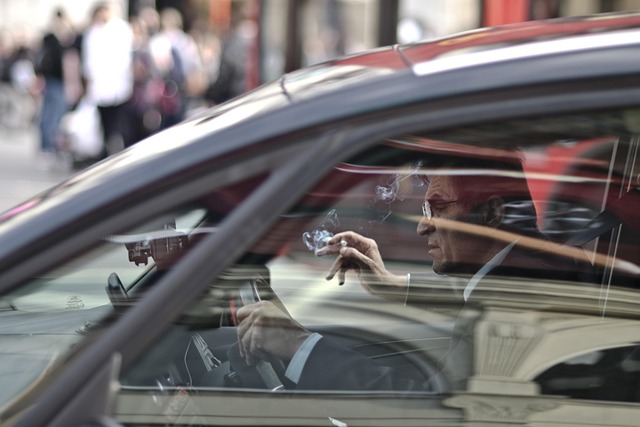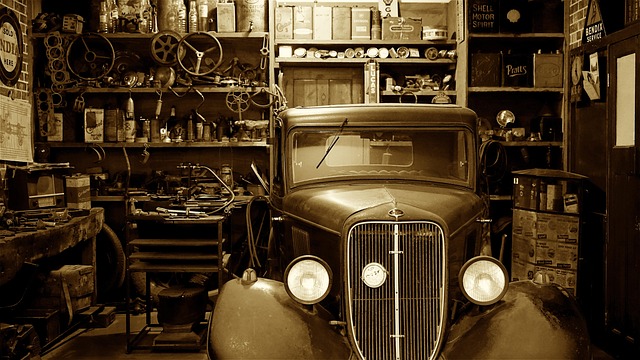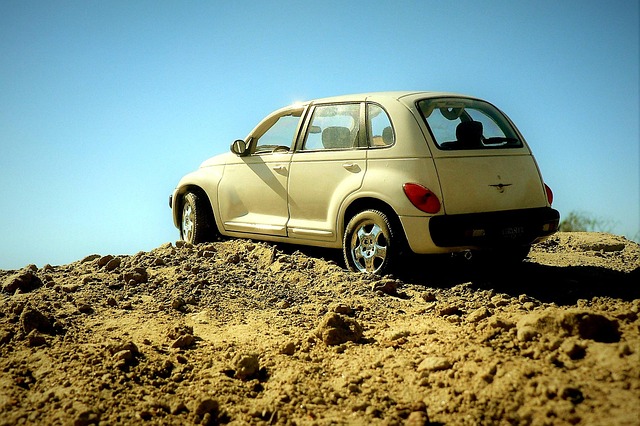Collision Effects on Plastic Bumper Covers: Repair Strategies & Prevention
Plastic bumper covers, integral to modern vehicles' design, protect sensitive structural elemen…….
In the ever-evolving landscape of automotive maintenance and repair, plastic bumper cover restoration has emerged as a specialized service, offering a unique solution for vehicle owners seeking to revive their cars’ aesthetics while promoting sustainability. This article aims to provide an in-depth exploration of this niche yet vital industry, catering to both professionals and enthusiasts curious about its intricacies. From understanding the fundamental processes to delving into global trends and future prospects, we will unravel the significance of plastic bumper cover repair in the modern automotive sector.
Definition: Plastic bumper cover repair is a specialized process that involves the restoration and reconstruction of damaged or faded plastic bumper covers on motor vehicles. It encompasses a range of techniques, from simple repairs for minor scratches to complex replacements for extensively damaged bumpers.
Core Components: The process primarily revolves around three key aspects:
Assessment and Preparation: This initial step involves carefully inspecting the bumper cover for damage, which can include cracks, chips, fading, or discoloration. The repair technician will then prepare the surface by cleaning, sanding, and priming to ensure optimal adhesion for the subsequent repairs.
Repair Techniques: Depending on the extent of the damage, several methods are employed:
Finishing Touches: Once the repairs are complete, the bumper cover is thoroughly examined for any residual imperfections. High-quality clear coat or paint is then applied to match the vehicle’s original finish, enhancing durability and aesthetics.
Historical Context: The concept of plastic bumper repair has its roots in the automotive industry’s shift towards lightweight materials. Traditional metal bumpers were replaced by more modern and lightweight plastics in the mid-20th century due to their reduced weight, cost-effectiveness, and improved crash performance. However, this transition also meant that plastic bumpers became more susceptible to damage from everyday wear and tear, as well as accidental collisions. As a result, the demand for repair services grew, leading to the development of specialized techniques and products over time.
Plastic bumper cover repair is a global phenomenon, with varying levels of adoption and specialization across regions. Here’s an overview:
| Region | Market Dynamics | Key Trends |
|---|---|---|
| North America | The US and Canadian markets lead in terms of service availability, driven by a high density of car owners and a culture of vehicle customization. Advanced repair techniques, such as fiberglass repairs and custom molding, are prevalent. | Personalized bumper covers for luxury vehicles are gaining popularity, allowing owners to add unique touches to their cars. |
| Europe | Europe has seen a significant rise in eco-conscious consumers who prefer repairing over replacing plastic bumpers to reduce automotive waste. Standardization of repair procedures across countries is improving service quality. | The use of advanced polymers and composite materials for bumper repairs offers enhanced durability and better impact resistance. |
| Asia Pacific | China and India, with their large populations and growing middle class, present significant opportunities for bumper repair services. Cost-effective repairs cater to a wide range of vehicle types. | Mobile repair services are on the rise, providing convenience to customers who prefer not to visit workshops. |
| Latin America | Brazil and Mexico exhibit a mix of traditional and modern repair practices. Local businesses offer specialized services, catering to both domestic and imported vehicles. | There is a growing demand for quick-turnaround repairs due to the region’s dynamic automotive market and busy consumer lifestyles. |
The plastic bumper cover repair industry operates within a dynamic economic ecosystem, presenting both challenges and opportunities:
Market Size: According to industry reports, the global automotive repair market, which includes bumper repairs, is projected to reach USD 562.9 billion by 2027, growing at a CAGR of 5.8% from 2020 to 2027. This growth is attributed to increasing vehicle ownership, rising disposable incomes in emerging markets, and the need for cost-effective repairs.
Investment Patterns: The industry attracts investments from both established automotive service centers and entrepreneurial startups. Specialized repair shops often focus on niche services, such as plastic bumper restoration, to differentiate themselves and tap into a dedicated customer base.
Economic Impact: This sector contributes significantly to local economies by creating employment opportunities for technicians, painters, and support staff. Moreover, it supports the growth of related industries, including automotive paint manufacturers, tool suppliers, and car detailing businesses.
Technology plays a pivotal role in enhancing plastic bumper cover repair, making processes faster, more precise, and environmentally friendly:
Computer-Aided Design (CAD) Software: CAD systems enable technicians to create digital models of damaged bumpers, facilitating accurate measurements and material selection. This technology streamlines the design process, ensuring perfect fitment of replacement parts.
3D Printing: The use of 3D printing technology for bumper repairs offers unprecedented customization and flexibility. Repairs can be tailored to individual vehicle models, and complex geometries can be replicated with precision, reducing the need for expensive molds.
Advanced Polymers: Newer polymer compounds provide improved impact resistance, durability, and colorfastness. These materials are lighter than traditional plastics, contributing to better fuel efficiency and reduced environmental impact.
Real-Time Data Analysis: Integrated diagnostic tools allow technicians to access real-time data on vehicle damage, repair history, and part compatibility. This enhances the efficiency of repairs and reduces the risk of errors.
The plastic bumper cover repair industry is subject to various policies and regulations that govern its operations, ensuring safety, quality, and environmental compliance:
Vehicle Safety Standards: Many countries have established safety regulations for automotive parts, including bumpers. These standards dictate the minimum performance requirements for crash protection, impact resistance, and structural integrity. Repairs must comply with these regulations to ensure vehicle safety.
Environmental Protection Laws: Due to the industry’s involvement in plastic manufacturing and disposal, it is subject to environmental regulations. These laws govern the responsible use of materials, waste management, and recycling practices within repair facilities.
Consumer Protection: Consumer protection acts safeguard the rights of vehicle owners during repair processes. These laws cover aspects such as transparent pricing, informed consent for repairs, and warranty provisions for repaired parts.
Training and Certification: Many jurisdictions require automotive technicians to undergo specialized training and obtain certifications in plastic bumper repair. This ensures a skilled workforce capable of performing high-quality repairs.
Despite its numerous benefits, the plastic bumper cover repair industry faces several challenges that require strategic solutions:
Skill Shortage: The specialized nature of this work demands highly skilled technicians who can master various repair techniques. Addressing the skill gap through training programs and apprenticeship initiatives is crucial for industry growth.
Counterfeit Parts: The availability of low-quality, counterfeit parts can undermine the integrity of repairs. Implementing strict quality control measures and promoting original equipment manufacturer (OEM) parts can mitigate this issue.
Customer Perception: Some consumers may perceive plastic bumper repairs as temporary solutions rather than long-term investments. Educating customers about the durability and benefits of professional repairs is essential to fostering trust.
Regulatory Compliance: Keeping up with evolving regulations, especially related to environmental standards, can be challenging for repair facilities. Investing in training and adopting sustainable practices are necessary steps to remain compliant.
A renowned classic car restoration shop in Germany has made a niche for itself in restoring vintage vehicles, focusing on their original plastic bumpers. By employing traditional hand-repair techniques combined with modern clear coating, they have achieved remarkable results. This case study highlights the following key points:
In bustling cities like Tokyo and Seoul, mobile bumper repair services have gained popularity due to their convenience and speed. One such company, operating out of a fleet of well-equipped vans, has mastered the art of on-site repairs:
The plastic bumper cover repair industry is poised for continued growth and innovation, driven by several emerging trends:
Sustainable Materials: The push for sustainability will drive the development of eco-friendly plastics and composite materials, reducing the environmental impact of repairs. Biodegradable polymers and recycled content are areas of active research.
Digitalization and Remote Services: Advancements in technology will enable more digital repair processes, including remote diagnostics and virtual consultations. This trend is particularly relevant for mobile repair services and remote customer support.
Personalized Designs: Customization will continue to be a significant trend, with customers seeking unique bumper designs that reflect their personal style. 3D printing and advanced CAD software will play pivotal roles in this area.
Integration of Advanced Technologies: The integration of artificial intelligence (AI) and machine learning algorithms can optimize repair processes, predict maintenance needs, and enhance quality control. These technologies have the potential to revolutionize the industry.
Plastic bumper cover repair is more than just a service; it represents a commitment to automotive aesthetics, sustainability, and efficient vehicle maintenance. As the global automotive landscape continues to evolve, this industry will play a vital role in keeping vehicles on the road while preserving their visual appeal. By embracing technological advancements, adhering to environmental standards, and addressing skill gaps, plastic bumper repair professionals can ensure a bright future for this specialized field.
Q: How do I know if my plastic bumper needs repair?
A: Look for signs of damage such as cracks, chips, fading, or discoloration. If these issues are minor, simple repairs may be sufficient. However, for more extensive damage, replacement might be necessary.
Q: Are plastic bumper repairs environmentally friendly?
A: Yes, repairs promote sustainability by extending the lifespan of plastic parts and reducing waste. Additionally, the use of eco-friendly materials further minimizes environmental impact.
Q: Can I perform a plastic bumper repair myself?
A: While some basic repairs may be done at home with the right tools and guidance, most complex repairs require professional skills and equipment. It’s recommended to seek expert assistance for best results.
Q: How long do plastic bumper repairs typically take?
A: Repair times vary depending on the extent of damage. Minor repairs can often be completed within a few hours, while more complex replacements may take a day or longer.
Q: Are there any guarantees for plastic bumper repairs?
A: Most reputable repair shops offer warranties covering their work and materials used. The terms vary, so it’s essential to inquire about the specific guarantee provided by your chosen service provider.

Plastic bumper covers, though protective, are prone to cracks from wear, UV exposure, weather change…….

Plastic bumper covers, though durable, are susceptible to cracks from impact damage, UV exposure, an…….

Plastic bumper covers protect modern vehicles but are prone to damage from collisions and environmen…….

DIY plastic bumper cover repair is popular for minor damages due to perceived ease and cost-effectiv…….

Plastic bumper covers on modern vehicles require care due to degradation from UV exposure, extreme t…….